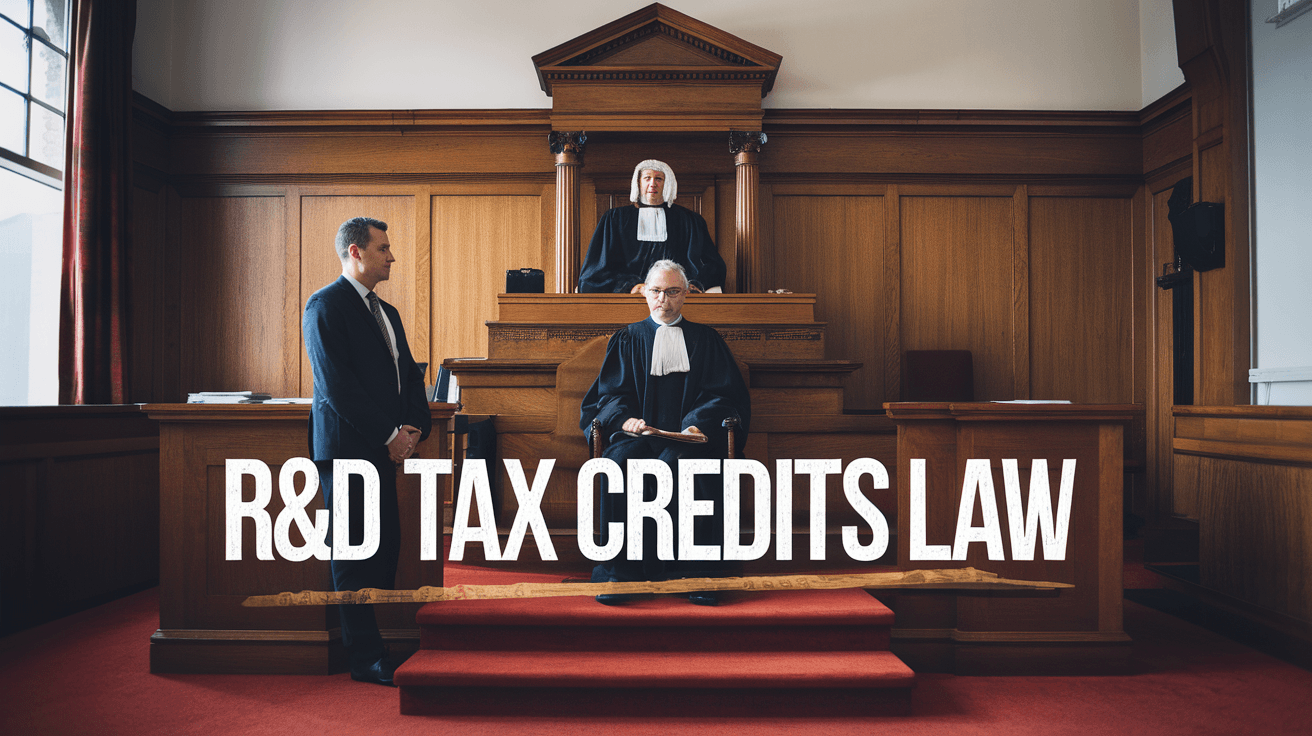R&D Tax Credits Potters Bar Hertfordshire
R&D Tax Credits in Potters Bar Hertfordshire are designed to incentivise businesses to invest in research and development. These financial incentives help offset the costs of innovative projects, making it easier for companies to advance new technologies and processes.
To qualify for R&D Tax Credits in Potters Bar Hertfordshire, your business must engage in activities that resolve scientific or technological uncertainties. This includes direct costs such as staffing, materials, and software expenses. The aim is to foster innovation and support local SMEs.
R&D Tax Credit Specialists can help you navigate the complex application process, ensuring you maximise your eligible expenditures and comply with HMRC guidelines. Their expertise can significantly enhance your claim, providing your business with the financial support it needs to thrive.

How Do R&D Tax Credits Benefit Potters Bar Businesses?
R&D tax credits provide Potters Bar businesses with a significant financial boost for innovation efforts. These credits encourage you to invest more in research and development, ultimately enhancing your competitive position in the market.
Financial Advantages
R&D tax credits can substantially reduce your corporation tax liability, leaving more funds available for reinvestment. This financial relief is particularly beneficial for small and medium-sized enterprises (SMEs) in Potters Bar, as it allows you to allocate resources to critical areas like product development and technology upgrades.
Competitive Edge in Innovation
By leveraging R&D tax credits, your business can stay ahead of the competition by continuously innovating. This ensures that you can develop new products and services more quickly, meet evolving customer needs, and maintain a strong market presence. The ongoing support from these credits can make a significant difference in sustaining your business's growth trajectory.

Which Industries Commonly Claim R&D Tax Credits?
Technology Sector, manufacturing, life sciences, and other sectors frequently claim R&D tax credits in the UK. These industries often invest heavily in innovative projects and can benefit significantly from the tax relief.
Technology Sector
The technology sector is a key player in R&D tax credit claims. Companies in this industry focus on developing new software, hardware, and digital solutions. This sector's investment in innovation is crucial for staying competitive in a rapidly evolving market.
Manufacturing
Manufacturing firms are another significant group claiming R&D tax credits. These companies often invest in new production techniques, materials, and machinery to improve efficiency and product quality. The credits can help offset the costs of these advancements, making the sector more robust and innovative.
Life Sciences
The life sciences industry, including pharmaceuticals and biotechnology, is also a major beneficiary of R&D tax credits. These companies invest heavily in research to develop new treatments, drugs, and medical technologies. The credits support the high costs associated with clinical trials and regulatory approvals.
Others
Other industries, such as construction, automotive, and energy, also claim R&D tax credits. These sectors often engage in innovative projects that can lead to more sustainable and efficient practices. The credits can provide a financial boost to support these initiatives.

What Qualifies as R&D Under UK Tax Law?
R&D qualifies under UK tax law if it involves resolving scientific or technological uncertainties to achieve an advance in the field. The process must involve systematic investigation or experimentation.
Qualifying Activities
Activities such as developing new or improved products, processes, or services can qualify as R&D. This includes software development, engineering, and scientific research.
Excluded Activities
Excluded activities include market research, management studies, and the production of commercial prototypes. These do not involve resolving scientific or technological uncertainties.
Understanding what qualifies as R&D is crucial for claiming tax relief effectively.

R&D Tax Credits are calculated based on the eligible costs you incur in the process of researching and developing new products, processes, or services. The formula for calculation varies depending on whether your company qualifies under the SME Scheme or the RDEC Scheme.
SME Scheme
For the SME Scheme, you can claim a percentage of your qualifying R&D costs. If your company has fewer than 500 employees and an annual turnover or balance sheet total of less than €100 million, you are likely eligible. The credit is calculated as 130% of your qualifying R&D costs, which can be offset against your corporation tax liability. This means for every £1 of qualifying R&D expenditure, you can claim an additional £1.30 to reduce your tax bill.
RDEC Scheme
The RDEC Scheme is designed for larger companies or those that are not eligible for the SME Scheme. Under this scheme, you receive a payable tax credit of 13% on your qualifying R&D costs. This credit is paid directly to your company, providing a financial boost to support your R&D activities. The RDEC Scheme is more straightforward but offers a smaller percentage compared to the SME Scheme.

Recent Changes to UK R&D Tax Credits
The UK Government has made significant updates to the R&D Tax Credits scheme, designed to support businesses investing in innovation. These changes aim to provide clearer guidance and increased benefits for companies engaged in research and development activities.
Policy Updates
- The eligibility criteria for R&D projects have been refined to include a broader range of innovative activities.
- The tax relief rates for small and medium-sized enterprises (SMEs) have been adjusted to offer more substantial financial support.
- New guidelines have been introduced to streamline the application process, making it easier for businesses to claim their entitlements.
These policy updates are expected to have a significant impact on businesses, particularly SMEs, by reducing barriers to claiming R&D tax credits and encouraging more companies to invest in innovation.

How Can Potters Bar Businesses Apply for R&D Tax Credits?
Potters Bar businesses can apply for R&D Tax Credits by following a specific application process and providing the necessary documentation. This can significantly reduce your tax liability and support innovation within your company.
Application Process
- Identify Eligible Activities: Determine if your projects qualify for R&D tax credits. This typically includes creating new products, processes, or services, or improving existing ones.
- Calculate Costs: Gather and calculate all eligible R&D expenses, such as staff costs, subcontractor fees, and materials.
- Complete the CT600 Form: Fill out the relevant sections of the Corporation Tax Return (CT600) form, including the R&D tax credit claim.
- Submit to HMRC: File your completed CT600 form with HMRC, either online or by post, ensuring all details are accurate and complete.
Required Documentation
You will need to provide detailed documentation to support your claim. This includes:
- Project Descriptions: Clear descriptions of the R&D projects, their objectives, and the technological or scientific uncertainties they address.
- Cost Breakdowns: Itemised lists of all eligible costs, with supporting invoices and receipts.
- Technical Reports: Reports from technical experts, if applicable, to validate the R&D nature of your projects.
- Company Financial Statements: Recent financial statements and accounts to provide context for your R&D activities.
By following these steps and providing the required documentation, you can effectively apply for R&D tax credits and benefit from financial support for your innovative projects.

Common Mistakes to Avoid When Claiming R&D Tax Credits
When claiming R&D Tax Credits, it is crucial to avoid common mistakes that can jeopardise your application. Overclaiming, underclaiming, and documentation errors are the primary pitfalls to watch out for.
Overclaiming
Overclaiming can lead to audits and penalties. Ensure your claims are accurate and supported by evidence. The HMRC has strict guidelines, so stick to them to avoid any unnecessary scrutiny. Overestimated costs or exaggerated claims can make your application look suspicious and undermine its credibility.
Underclaiming
Underclaiming can result in missing out on valuable tax credits. Make sure you are claiming for all eligible activities and costs. R&D includes a wide range of activities, from developing new products to improving processes. Ignoring eligible areas can mean leaving money on the table.
Documentation Errors
Documentation errors can invalidate your claim. Keep detailed records and ensure all documentation is accurate and up-to-date. The HMRC requires thorough documentation to support your claims, so maintain clear and organised records throughout the R&D process. Missing or incorrect documentation can delay your claim or lead to rejection.

How Can Professional Advice Improve R&D Tax Credits Claims?
Professional advice can significantly improve R&D tax credits claims by ensuring that you maximise eligible expenditures and navigate complex regulations. By leveraging the expertise of R&D Tax Credit Specialists, you can avoid common pitfalls and secure the full benefit of these incentives.
Role of Tax Credit Specialists
- Identifying Eligible Activities: Specialists can help you identify and document R&D activities that qualify for tax credits.
- Understanding Complex Regulations: They have in-depth knowledge of HMRC guidelines and can ensure your claim meets all legal requirements.
- Maximising Claim Value: Specialists use their expertise to find and include all eligible costs, potentially increasing the size of your tax credit.
Benefits of Expert Guidance
Expert guidance from R&D Tax Credit Specialists can provide several key advantages. They can help streamline the claim process, reducing the time and effort required from your team. Additionally, their experience in R&D tax credits can lead to a more thorough and accurate claim, potentially resulting in higher financial returns. This can free up more resources for your business, allowing you to focus on innovation and growth.
In Conclusion
R&D Tax Credits in Potters Bar Hertfordshire are a valuable financial incentive for businesses engaging in innovative activities. By claiming these credits, you can significantly reduce your tax liability and gain the financial support needed to advance your projects. Whether you are in the technology sector, manufacturing, or life sciences, the benefits of R&D tax credits can help your business stay competitive and foster growth.
To ensure you maximise the benefits of R&D Tax Credits, it is essential to understand the eligibility criteria and application process. By accurately identifying eligible activities and costs, and providing thorough documentation, you can avoid common mistakes and secure the full benefit of these incentives. If you need expert guidance, consider consulting R&D Tax Credit Specialists to navigate the complexities and optimise your claim.
If you believe your business could benefit from R&D Tax Credits, take the first step today by contacting R&D Tax Credit Specialists and start leveraging these incentives to drive innovation and growth in your company.

